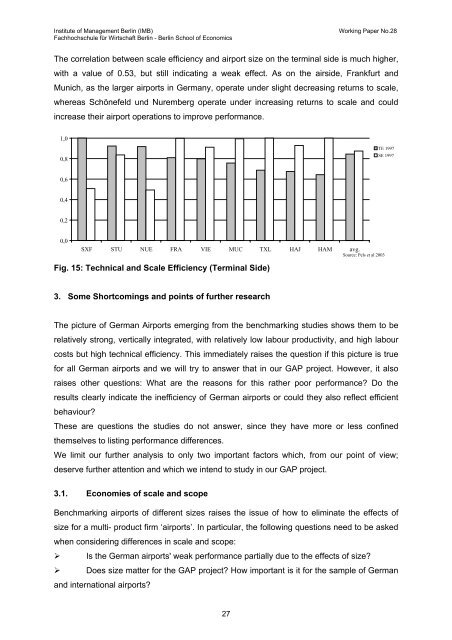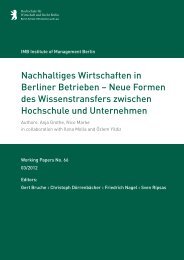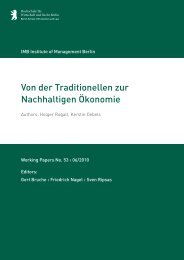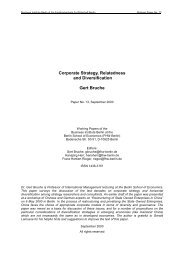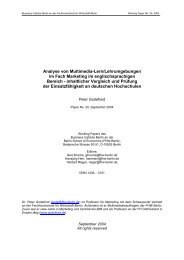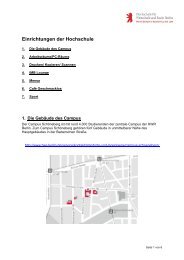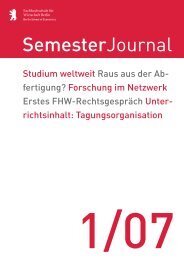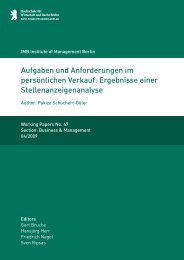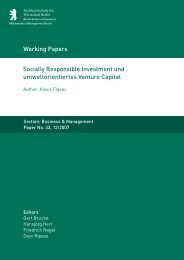Working paper template - MBA Programme der HWR Berlin
Working paper template - MBA Programme der HWR Berlin
Working paper template - MBA Programme der HWR Berlin
Create successful ePaper yourself
Turn your PDF publications into a flip-book with our unique Google optimized e-Paper software.
Institute of Management <strong>Berlin</strong> (IMB) <strong>Working</strong> Paper No.28<br />
Fachhochschule für Wirtschaft <strong>Berlin</strong> - <strong>Berlin</strong> School of Economics<br />
The correlation between scale efficiency and airport size on the terminal side is much higher,<br />
with a value of 0.53, but still indicating a weak effect. As on the airside, Frankfurt and<br />
Munich, as the larger airports in Germany, operate un<strong>der</strong> slight decreasing returns to scale,<br />
whereas Schönefeld und Nuremberg operate un<strong>der</strong> increasing returns to scale and could<br />
increase their airport operations to improve performance.<br />
1,0<br />
0,8<br />
0,6<br />
0,4<br />
0,2<br />
0,0<br />
SXF<br />
STU NUE FRA VIE MUC TXL HAJ HAM avg.<br />
Source: Pels et al 2003<br />
Fig. 15: Technical and Scale Efficiency (Terminal Side)<br />
3. Some Shortcomings and points of further research<br />
The picture of German Airports emerging from the benchmarking studies shows them to be<br />
relatively strong, vertically integrated, with relatively low labour productivity, and high labour<br />
costs but high technical efficiency. This immediately raises the question if this picture is true<br />
for all German airports and we will try to answer that in our GAP project. However, it also<br />
raises other questions: What are the reasons for this rather poor performance? Do the<br />
results clearly indicate the inefficiency of German airports or could they also reflect efficient<br />
behaviour?<br />
These are questions the studies do not answer, since they have more or less confined<br />
themselves to listing performance differences.<br />
We limit our further analysis to only two important factors which, from our point of view;<br />
deserve further attention and which we intend to study in our GAP project.<br />
3.1. Economies of scale and scope<br />
Benchmarking airports of different sizes raises the issue of how to eliminate the effects of<br />
size for a multi- product firm ‘airports’. In particular, the following questions need to be asked<br />
when consi<strong>der</strong>ing differences in scale and scope:<br />
� Is the German airports' weak performance partially due to the effects of size?<br />
� Does size matter for the GAP project? How important is it for the sample of German<br />
and international airports?<br />
27<br />
TE 1997<br />
SE 1997


